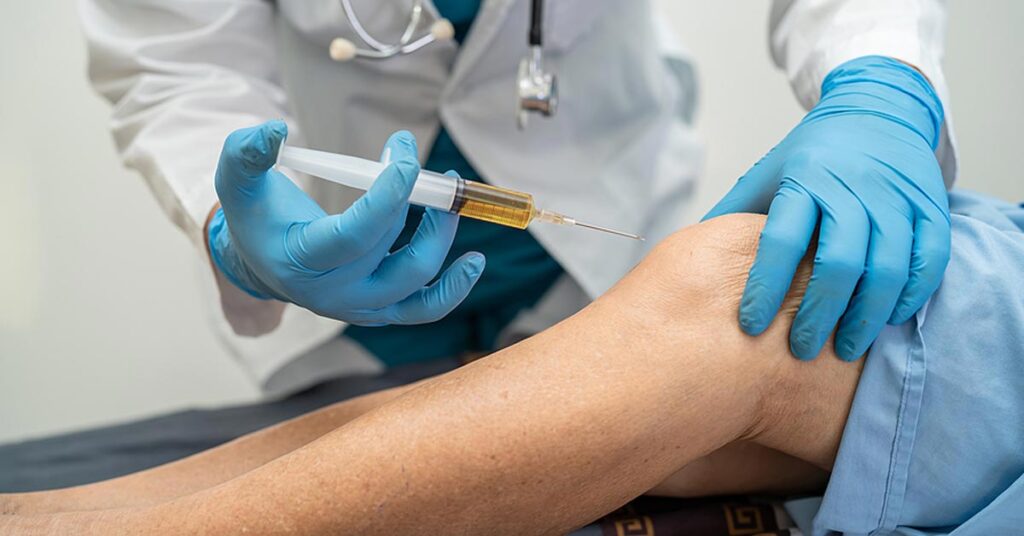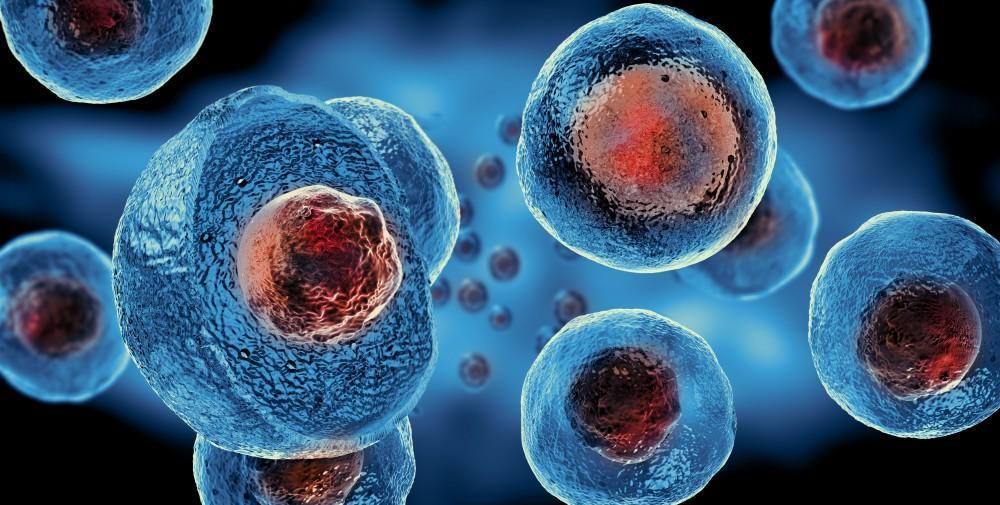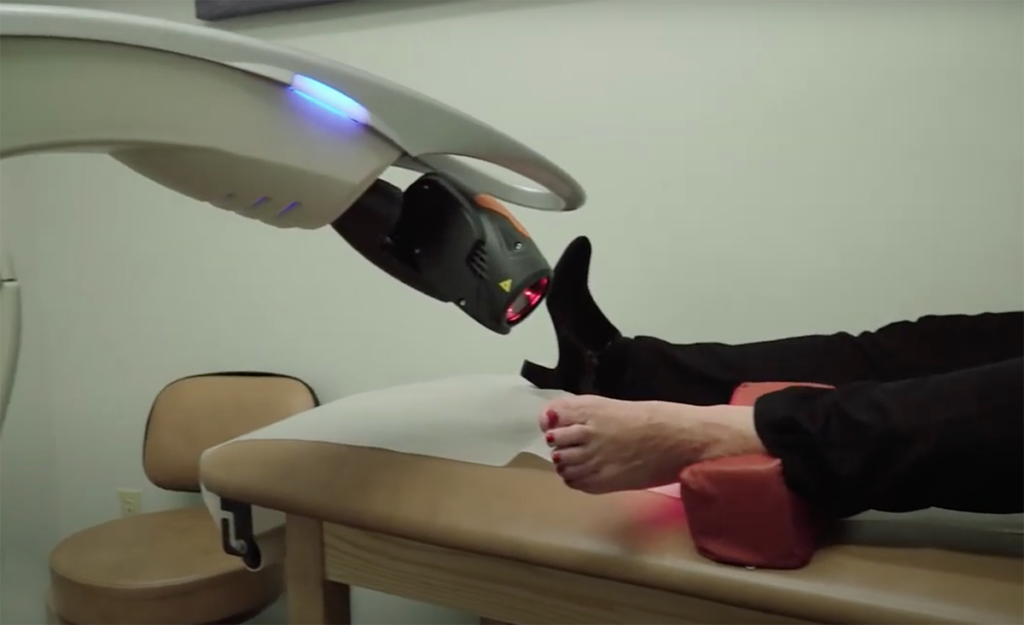PRP, Stem Cell, and More
Joint pain affects millions globally, particularly those dealing with arthritis, injury-related discomfort, and other chronic conditions. Traditional treatments like physical therapy and anti-inflammatory medications may offer relief, but newer, innovative therapies are making waves in the field of joint pain management. Below, we explore some of the latest and most promising treatments, including Platelet-Rich Plasma (PRP) therapy, stem cell therapy, and more, to help you find the best options for long-term relief.
Platelet-Rich Plasma (PRP) Therapy for Joint Pain

What is PRP Therapy?
Platelet-Rich Plasma (PRP) therapy is a cutting-edge treatment that leverages the body’s healing process to relieve joint pain. PRP therapy involves extracting a small sample of the patient’s blood, processing it to concentrate the platelets, and then injecting the enriched plasma into the affected joint area. Platelets contain proteins and growth factors that stimulate tissue repair and reduce inflammation, making PRP an attractive choice for chronic joint pain sufferers.
Benefits of PRP Therapy
One of the main advantages of PRP therapy is its ability to promote natural healing within the joint, potentially reducing the need for invasive surgery. This therapy has shown positive results, especially for osteoarthritis, knee pain, and rotator cuff injuries. Since PRP is derived from the patient’s blood, the risk of adverse reactions is relatively low.
Drawbacks of PRP Therapy
While PRP therapy has numerous benefits, it is not an instant solution. Patients often need multiple sessions, and results can vary based on factors like the severity of the condition and the individual’s overall health. Furthermore, insurance may not cover PRP therapy, making it an out-of-pocket expense for many.
Stem Cell Therapy: A Breakthrough for Joint Pain Relief

What is Stem Cell Therapy?
Stem cell therapy for joint pain focuses on regenerating damaged tissues using the body’s stem cells. Typically, cells are harvested from the patient’s bone marrow or adipose tissue, processed, and injected directly into the affected joint. These stem cells have the unique ability to transform into different types of cells, enabling them to repair damaged cartilage and reduce inflammation.
Advantages of Stem Cell Therapy
Stem cell therapy offers significant potential for long-term relief from joint pain. Unlike traditional therapies that only alleviate symptoms, stem cells work to repair and restore joint function. This makes stem cell therapy particularly appealing to those with advanced arthritis or chronic injuries. Research shows that patients often experience improved mobility, decreased pain, and a higher quality of life after the treatment.
Challenges of Stem Cell Therapy
Stem cell therapy, while promising, is still relatively new and can be costly. It’s also essential to consult with reputable clinics, as there are varying levels of regulation and quality in stem cell treatment facilities. Success rates can also differ, as the therapy depends on factors such as the individual’s overall health and the severity of joint damage.
Hyaluronic Acid Injections: Rehydrating the Joints

What is Hyaluronic Acid Therapy?
Hyaluronic acid is a naturally occurring substance in the body that helps to lubricate and cushion joints. Hyaluronic acid injections involve injecting a synthetic version of this substance into the joint to reduce friction and improve movement. This therapy is widely used for knee osteoarthritis, providing pain relief and enhancing joint flexibility.
Benefits of Hyaluronic Acid Therapy
These injections can be an excellent option for patients who may not be ready for more invasive treatments. The benefits include a relatively quick recovery period, reduced stiffness, and improved mobility in the joint. Many patients report experiencing relief for several months following treatment, and it can be safely repeated as needed.
Limitations of Hyaluronic Acid Injections
The primary drawback is that hyaluronic acid injections may not be effective for everyone, especially for those with severe arthritis. While the procedure is minimally invasive, it’s not a permanent solution, and most patients require repeat injections for ongoing relief.
Shockwave Therapy: An Emerging Solution

Understanding Shockwave Therapy
Shockwave therapy is a non-invasive treatment that uses acoustic waves to stimulate healing in damaged tissues. It’s primarily used for tendon and joint issues, making it suitable for chronic joint pain sufferers. During the procedure, targeted shockwaves are applied to the affected area to promote blood flow, reduce inflammation, and encourage tissue regeneration.
Benefits of Shockwave Therapy
Shockwave therapy offers a non-surgical approach to joint pain that can be completed quickly, often within a few sessions. The acoustic waves promote the body’s natural healing processes, making it ideal for treating chronic joint inflammation or degenerative joint issues.
Challenges with Shockwave Therapy
Some patients may experience mild discomfort during the treatment, and it may not provide immediate relief. Additionally, insurance may not cover shockwave therapy, which means patients may need to pay out of pocket. This therapy may also be less effective for severe or advanced joint conditions.
The Role of Regenerative Medicine: Combining Therapies for Maximum Relief

What is Regenerative Medicine?
Regenerative medicine aims to restore or replace damaged cells and tissues, often combining treatments like PRP and stem cell therapy for enhanced results. This approach leverages the body’s own healing mechanisms, offering a more holistic solution for chronic joint pain.
Benefits of Combining Therapies
Combining treatments can lead to improved outcomes by addressing multiple aspects of joint health, from inflammation to tissue repair. This multi-faceted approach is particularly effective for complex or long-standing joint pain, as it provides a more comprehensive solution than single therapies.
Drawbacks of Combination Therapy
Combination therapy can be more costly and time-intensive, and not every patient will respond to these advanced treatments in the same way. There may also be limitations based on medical eligibility or specific health conditions.
Cold Laser Therapy for Pain-Free Joint Relief

What is Cold Laser Therapy?
Cold laser therapy, also known as low-level laser therapy (LLLT), is another non-invasive option. It involves the application of low-level lasers to the affected joint, aiming to reduce inflammation and stimulate cellular repair. This treatment is increasingly popular for conditions like rheumatoid arthritis and tendonitis.
Benefits of Cold Laser Therapy
Cold laser therapy is painless and non-invasive, with no downtime required. Many patients report experiencing relief after just a few sessions, making it a convenient option for busy individuals. Additionally, it can safely be combined with other therapies.
Drawbacks of Cold Laser Therapy
While generally safe, the results can vary depending on the severity of joint pain and individual responsiveness. Cold laser therapy might not provide relief for advanced cases, and its effects may be temporary, requiring regular sessions for sustained benefits.
High RPM Keywords: cold laser therapy, non-invasive arthritis treatment, chronic pain laser treatment, joint inflammation relief
Choosing the Right Treatment for You

With so many innovative joint pain therapies available, deciding which one to pursue can feel overwhelming. Consulting with a specialist who can tailor recommendations based on your medical history and condition is crucial. Each of these treatments offers unique benefits, so taking the time to understand them and discussing your options with a medical professional can lead to better, more sustainable relief.
These advanced therapies represent a shift toward more personalized and effective joint pain management. Whether through PRP, stem cell therapy, or other innovative solutions, these treatments are designed to target the root causes of pain, helping you lead a more active and pain-free life.


